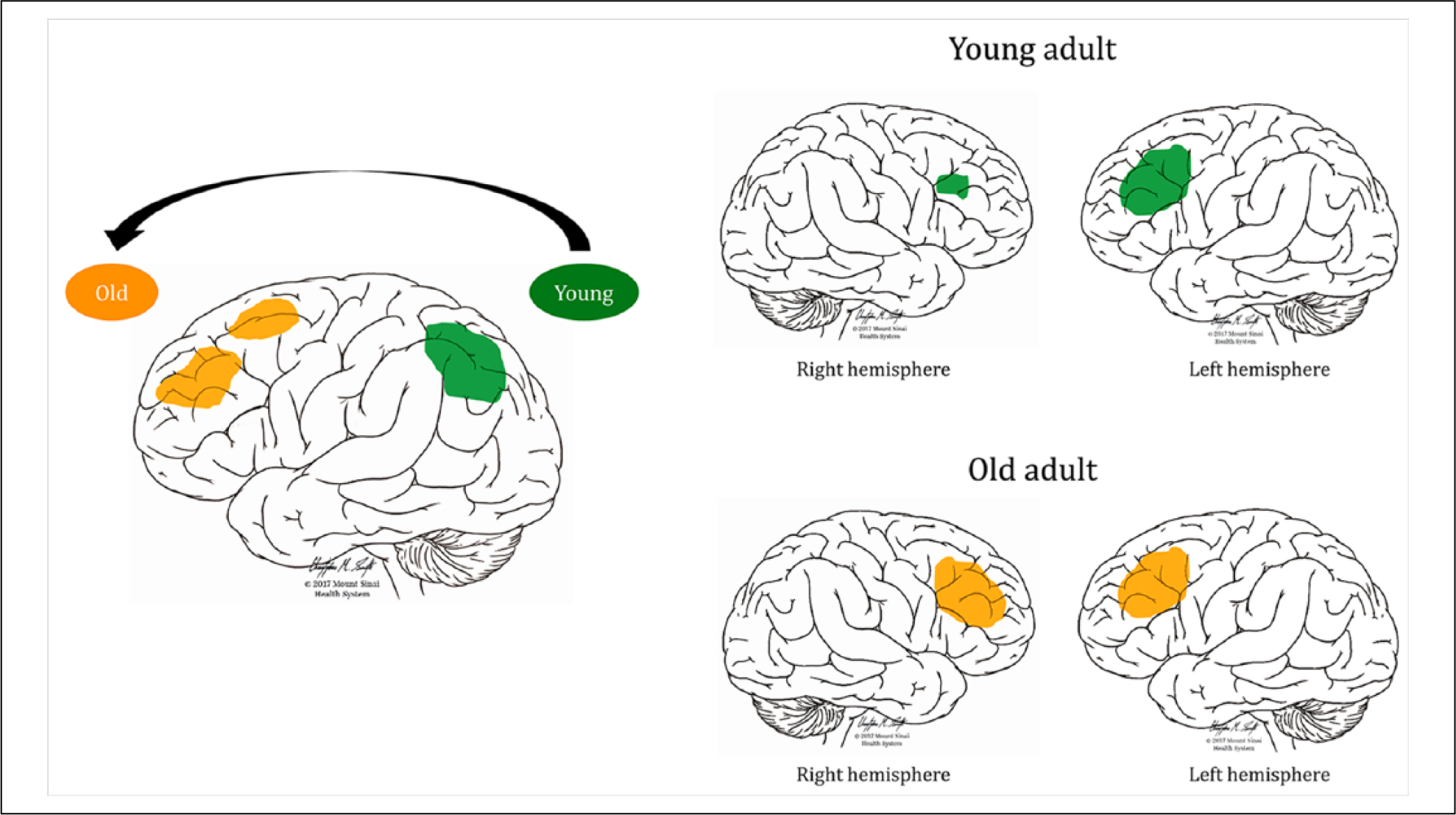Figure 4.

Examples of working memory adaptations during healthy aging. The left image shows a posterior-anterior shift in activation during a complex visual selective attention task (Ansado and others 2012). Younger subjects show greater activation in the posterior parietal cortex bilaterally, whereas older subjects shift their activation to more frontal regions (Davis and others 2008; Ansado and others 2012). The right image shows the usual left-dominant asymmetric activation in young adults during a verbal working memory task (top) and more symmetrical bilateral activation of prefrontal brain regions in older adults during the same task to compensate for age-related neural deficits (bottom, Cabeza, 2002).
